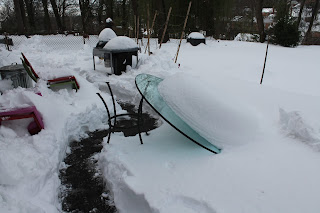Just like last year, this summer has been super busy with other things. Both this blog and my hops have been badly neglected. The summer in general has been pretty brutal for the hops, which makes something of a contrast to last year when I was worried about the severity of the preceding winter. Hopefully next year will be a little more even keeled. Anyway, here's this year's harvest:
The Cascade gave me no usable cones at all. Here's the closest it got (I didn't find any others):
I'm now wondering if I let too many of the bull shoots grow:
I did notice that the Columbus was much more productive on thinner shoots than the thicker ones. Next year I will be merciless with any that appear in spring time.
The rhizome I transplanted at the bottom of the garden in an effort to control the invading weeds from next door hasn't exactly flourished but nor has it disappeared:
I'm hopeful it will return next year with a vengeance and push back the invaders further.
One much cooler thing that came out of harvest day was that my better half did some cyanotypes, including one of some hops leaves with a hop cone cut in half:
If you look closely you can see where the lupulin from the cone as interacted with the paper.




























